Content
Yellow plums are attractive with their bright colors. These berries are used for compotes, jam, jams. Moreover, this plant always pleases with a rich harvest. Yellow plum fruits are also in great demand among winemakers. The result, if the recipes are followed, is a dessert white wine.
You can treat your dear guests with homemade yellow plum wine, serving the drink with meat, fish dishes and poultry. Citrus fruits, chocolate and marmalade are suitable for light white wine.
Let's share secrets
Winemakers who make white wine from yellow plums know many of the intricacies of their craft and are ready to share many of them with beginners.
Some additives affect the taste of wine:
- If you want a tart wine, add currant sprigs.
- If you use clove buds, thyme, oregano, the aroma of the wine will be extraordinary.
- By adding apricots to plums, you get a sweet dessert drink.
- Healing wine can be prepared if, instead of granulated sugar, you use honey in a 1:1 ratio.
There is one more general nuance when making wine from yellow plums: the fruits contain little liquid, so you always have to add water to the pulp. There is no way to do without this.
When choosing plums, pay attention to their quality.Discard any suspicious fruits immediately. Rot will spoil the wine.
We hope that the collection of secret moments when making homemade yellow plum wine will be replenished with your tips.
Plum wine is a healthy drink, rich in vitamin C, carotene and other substances. Drinking the drink in small doses helps strengthen the immune system, improves blood circulation, and increases hemoglobin.
Our wine library
It is not necessary to use only white plums when making wine; you can always experiment and add fruits of other varieties and colors. Then the drink will have a different color and taste.
But today we will focus on some simple recipes for making plum wine from yellow fruits.
Option 1 – classic recipe
According to the recipe we will need:
- yellow plums – 8 kg;
- granulated sugar – 1kg 600g or 2kg;
- water – 1000 ml.
Cooking method
- There is no need to wash the plums before starting the wine. The whitish coating contains bacteria or wild yeast that are responsible for the fermentation process. Therefore, you need to wipe the contaminated areas with a cloth and remove the seeds from each yellow fruit. Plum kernels contain hydrocyanic acid, which will make the wine not only bitter, but also hazardous to health.
- Carefully grind the berries in a large bowl until you get a puree. It is best to perform this procedure with a wooden masher.
- Then pour the plum puree into a saucepan and add a liter of warm boiled water. Set the container aside in a warm, dark place for fermentation for five days.Stir the plum pulp constantly and lower it down.
- When the required time has passed, filter the liquid and separate the pulp through several layers of gauze. Everything that ends up in it also needs to be squeezed out and poured into the total mass.
- Pour some liquid, heat it slightly, add the required amount of sugar. More or less - it all depends on the taste of plums and your preferences. If you like your wine sweet, add all the sugar called for in the recipe or even a little more.
- Pour the wine into a large bottle and place it on a water seal. If such a device is not available in your arsenal, put a medical glove with a finger pierced with a needle over the neck. The bottle of wine should be placed in a cool place and shaken daily.
Do not fill the container to the top so that there is room for fermentation. - Plum wine at home, according to a simple recipe, should ferment for two months, then remove it from the sediment several times, trying not to disturb the settled yeast.
- At the end of fermentation, pour the plum wine into bottles and seal tightly. The plum drink will gain aroma, taste and color after 2-3 years. But young wine can be drunk earlier, after 5-6 months.
Option 2 – medicinal plum wine
Prepare the following ingredients:
- yellow plums;
- granulated sugar;
- raisin.
We do not name the exact quantity of ingredients for preparing homemade plum wine according to a simple recipe, but we will clarify the proportions. For every kilogram of fruit you need to take:
- 800 ml water;
- 200 grams of dark raisins;
- 150 grams of sugar.
These ratios will allow you to prepare wine from plums at home in the required quantity.
And now about the cooking rules:
- Place unwashed raisins with wild yeast on the surface into a cup and fill with water no more than +30 degrees, add 50 grams of granulated sugar. The starter must remain warm for at least four days. In hotter water the tremors will die, but in lower temperatures they will not work.
- On the fourth day, crush yellow plums with plaque (do not wash them under any circumstances!) and squeeze out the juice.
Fill the pomace with water and squeeze again. Pour the plum liquid into a bottle, add sugar and liquid from the infused raisins. Place the fermentation bottle. - All other actions correspond to the traditions of making wine at home.
Slivyanka with medicinal properties will be ready in 90 days.
Option for preparing a fortified drink
There is no need to wait several months to taste plum wine. If you use our express recipe, you can try the resulting liqueur at home in two months.
Despite the fact that the drink contains vodka, the taste still remains original. Even ladies can easily use it. Fortified plum wine is stored at home in a cool, dark place.
What we need:
- 5 kg yellow plum;
- 5 liters of quality vodka;
- 1 kg sugar.
There are some nuances in this recipe, the observance of which is mandatory:
- Since the role of wild yeast in this recipe is irrelevant, the yellow plums must be thoroughly washed, pitted and mashed.
- Place the resulting puree in a large bottle, add granulated sugar, and pour in vodka. Then the bottle is sealed and put in a warm place for 60 days.
- At the final stage, the wine must be filtered and poured into appropriate containers.
You can invite guests and jointly taste yellow plum wine prepared at home.
Option 3 – spicy wine
Many lovers adore spicy slivyanka. This recipe is just for them. Prepare the following products in advance:
- yellow plums – 2 kg;
- clove buds - 5 pieces;
- bay leaf – 3 leaves;
- granulated sugar – 1000 grams;
- clean water - 3 liters.
We won’t wash the plums, but we will definitely take out the pits. Crush the fruits, then add water (1 liter), clove buds, bay leaf, sugar. Place the container on the stove and cook until foam appears.
After this, remove from heat and cool. Squeeze out the pulp using a press. Pour another liter of boiled water into the resulting mass, mix and filter again. Add the last liter of water. Pour the resulting liquid into a bottle (not to the top) and place it in a warm place. After 12 days, homemade yellow plum wine is ready.
Clarifying plum wine
The process of clarifying homemade yellow plum wine, the simple recipes for which we have offered you, is completed only after a few years. The reason lies in the high pectin content in fruits. For these purposes, winemakers use various preparations. See how they do it:
But you can quickly clarify wine if you use chicken egg whites.
And now about this step by step:
- For every 50 liters of plum wine, only 2 proteins are needed;
- separate them from the yolks and beat thoroughly until foam forms;
- then gradually add half a glass of boiled water, mix the resulting mass;
- pour the mixture into the wine in a thin stream and stir;
- After half a month, sediment will appear at the bottom of the bottle.
Carefully remove the wine from it, pouring it into a new container. But we won’t pour it into small bottles yet. The wine is not finished yet brightened up, there is noticeable turbidity in it.After three weeks, we will repeat the removal from the sediment and filtration. Only after plum wine prepared at home becomes completely transparent can it be poured into small containers and sealed tightly.
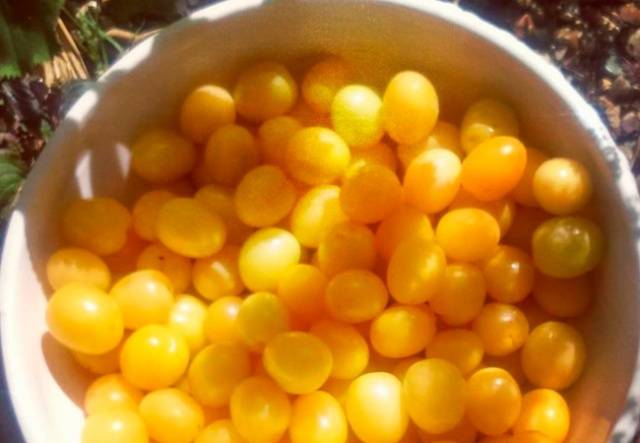

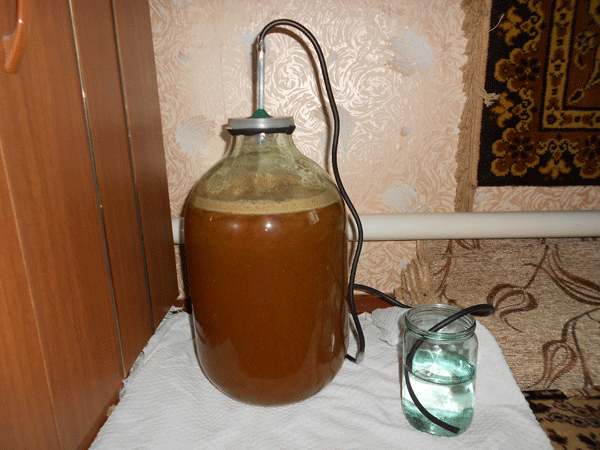

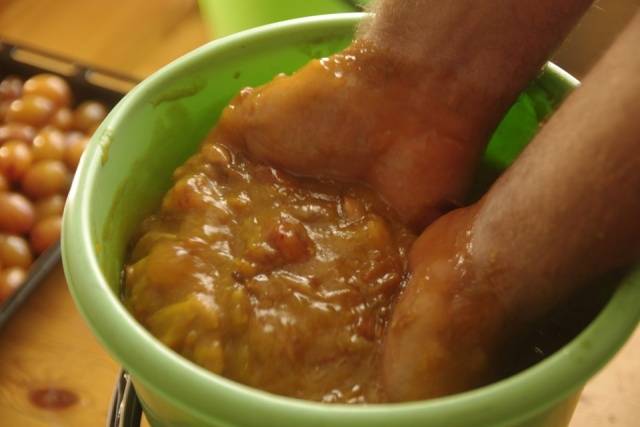
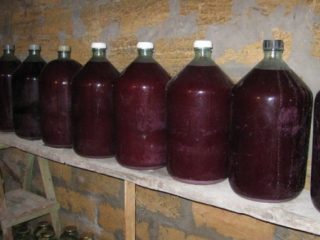
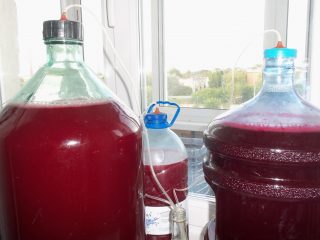
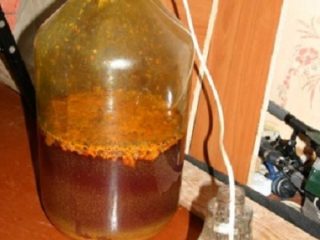
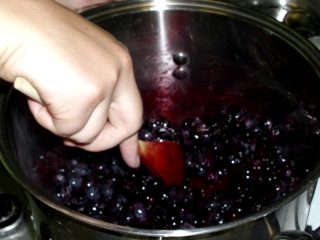

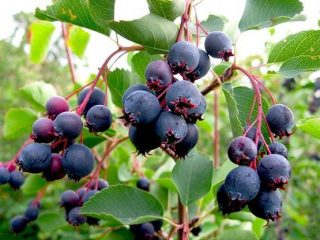
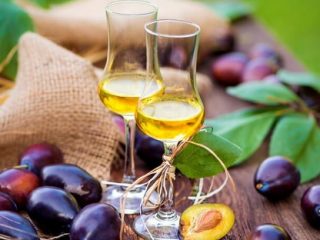
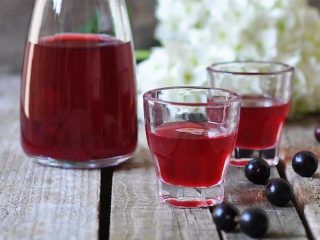
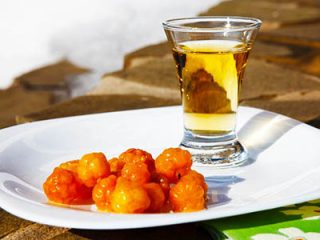
Hello, wine option No. 3 is spicy, the recipe is ready in 12 days. Can you drink it right away? Or should it last in bottles for a while?
Good afternoon, dear Elena!
The wine according to recipe No. 3, called “Spicy,” will indeed be ready in 12 days. You can drink it immediately after filtering. There is one “but”... Wine prepared according to this recipe cannot be stored for a long time. The maximum shelf life is a month. This nuance must be taken into account.
We wish you high harvests!
Hello! Puree with or without water is called pulp. Point 3. “Then pour the plum puree into a saucepan and add a liter of warm boiled water. Set the container aside in a warm, dark place for fermentation for five days.Stir the plum pulp constantly and lower it down.” That is, do I understand correctly that apart from this liter of water added to the puree, then you shouldn’t add water at all? How much wine remains after pressing, will there be as much wine? It’s just that I’m making plum wine for the first time, I’ve read a lot of recipes and they say the volume of water or for each kg. plums, or per liter of finished pulp.
It’s not clear in the first recipe for a classic wine that for 8 kg, drain only a liter of water or something, which is added to the pulp? It can not be so! Why is it not written whether to add water later or not? Judging by the photo, there is a large bottle of wine there; a liter of water will not produce that much wine. I'd like to see the answer.
Hello, if you re-read the recipe again, you will see that water is added not to the pulp, but to the plum puree. Wine is actually made from juice; pulp is needed because the skin of the fruit contains “wild” yeast. Water is added only because the consistency of plums is very dense and the juice does not separate well. The easiest way is to add a little water to the plum puree, let it ferment, and then squeeze out the pulp and throw it away.